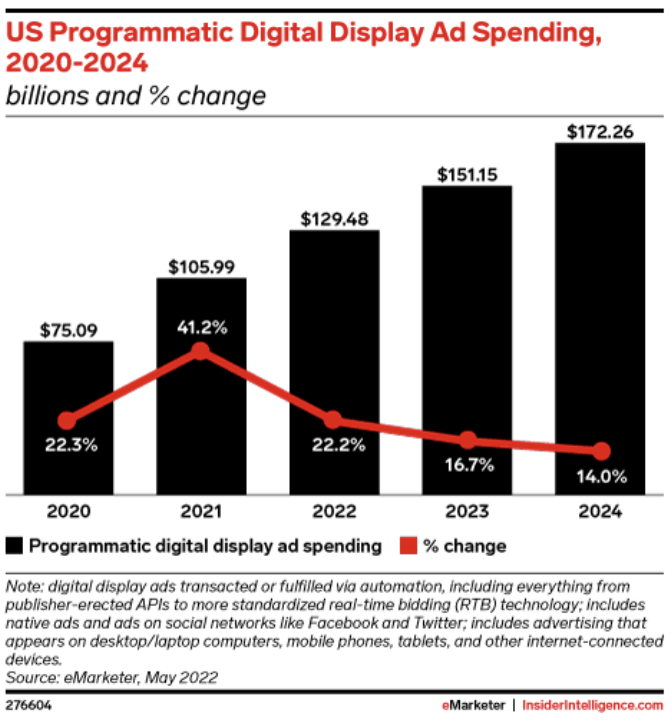One of the greatest challenges that publishers are facing the world over, is an ever-changing digital landscape.
This new age of publishing comes with a wide range of demands; publishers must treat technological adaptation as imperative, devise more efficient ways of understanding net-new consumer behaviours as new generations age into news consumption, and always be prepared for the moment when, at the whim of a small handful of tech giants, months of work can be upended overnight. Lest we forget the mayhem that ensued when Google announced it would be eliminating third-party cookies.
Publishers and the global markets at large have, more or less, adjusted to the new normal – even though Google yet again delayed the cookie demolition to 2024 instead of 2023. Having adapted to first-party data, for the most part, publishers have been able to uncover reasonable solutions to all of the above demands. First-party data analytics can inform new insights and illuminate a multitude of fresh paths to heightened revenue and a diversification of income streams. One such stream is ad revenue.
Thus, to the laundry list of things publishers must have these days, one must add: a fully fleshed out revenue-focused ad space strategy. In the wake of Google’s big cookie announcement, advertisers quickly invested billions of dollars in order to capture as much value from third-party data as they could. Those investments were fast and furious, but quickly diminished after their peak in 2021. According to research conducted by Insider Intelligence, the rate that advertisers have spent on digital display advertising has since steadily declined as projections show diminishing investments in the years to come.

What does this mean as publishers, brands, and corporations look ahead?
No more cookies: what this means for publishers
It’s important to note that, in the chart above, not all of those display-ad investments were directly or even loosely tied to publishers. Businesses of all backgrounds advertise on the web, but the media and publishing industry is uniquely affected by the pending end of third-party cookies. Not to mention the rise of crucial privacy protection mandates emerging globally, all with the intent of safeguarding consumer data. At face value, this may seem like a daunting challenge for publishers who rely so heavily on data to guide their content and editorial teams – but is it?
The digitally savvy consumer is no longer anomalous, they are the norm. Modern consumers are far more protective of their privacy, well aware of the value their information holds, and they’re much less quick to trust any old businesses to respect their data. According to Deloitte, 40% of consumers don’t trust online services to respect their privacy. Which, when it comes to ad space and ad revenue for publishers, means they’re less likely to interact with unwarranted and unwanted ads.
A growing trend emerging in consumer behaviour is that the timing and relevance of an advertisement on their journey is of the utmost importance; they want the right ad for them, at just the right time – anything else will diminish their interest, trust, and brand loyalty.
Listen & Learn: earn an audience’s trust with their own data
With consumers more fickle (justifiably so) than ever, how can organizations navigate their user needs and meet their own business goals?
By forming real, meaningful relationships with them.
If a publisher is able to leverage their data to provide the content and experiences their audiences want to have with their site, consumers will feel connected to their brand. Over time, affiliation with the brand will nurture readers to develop an affinity for the publication, making them more likely to come back for new content. This means that publishers are in direct possession of their very own high-value niche-interest users that, if analyzed and segmented properly – can raise their ad space cost per mille(CPM) astronomically and give prospective ad partners access to ideal target audiences.
First-party data is the resource that allows publishers to create those kinds of brand experiences. Unlike third-party data, first-party data is directly collected from consenting users. Each time a user interacts with a site by visiting a webpage, commenting on a post, searching for specific articles, etc., each of those touchpoints provides first-party data points.
It’s through collecting all those insights that organizations can build rich audience profiles and create content that appeals to their users’ interests. This personalization of direct relationships between brands and their audiences is paramount to continued growth and success.
The rewards from personalization are highly engaged users who interact with more content on publishers’ sites, including personalized display ads promoted by their affiliates. Personalization is one of the keys to bolstering growth in audience, reduction in attrition, and improving ad and subscription revenue. According to McKinsey & Company, 71% of users want publishers to personalize their experiences.
The audience’s intent is laid bare; all that’s left is to do the work in order to analyze, interpret, and take strategic action with their first-party data.
First-party data is the key to an ad revenue boom
By creating a first-party data strategy, publishers can win over their audiences and create longstanding relationships with loyal consumers of their content. Imbued with brand-trust and their intrinsic value as consumers, these audiences become key partners in building profitable relationships with existing and prospective ad partners who want to buy engaged time with high-value interest-relevant users.
Google and Facebook dominate the digital advertising landscape, controlling a whopping 57% of all digital ad revenue. Although, even with the lion’s share in their possession, the returns on those investments leave much to be desired. According to HubSpot, 68% of marketers say paid display advertising is “very important” or “extremely important” to their overall marketing strategy. However, a “good” return on advertising spend (ROAS) is a 4:1 ratio, meaning $4 of revenue for every $1 spent.
Given the complexity of Google and Facebook’s algorithms, which have traditionally relied on third-party cookies to reach viewers, many advertisers fall well short of that average benchmark when calculating ROI on their ad campaigns. In fact, 80% of marketers say their campaigns were less effective without accurate audience identifiers. Those advertisers need to grow their businesses, and they need a better way to do so.
Publishers with detailed audience profiles are saviors for these advertisers. Audience profiles tell affiliate advertisers what consumers are looking for in terms of visuals, messages, offers, and promotions that motivate them to click on an ad insert. These profiles, built using first-party data, are far more valuable to advertisers than playing a guessing game with Google or Facebook.
The odds of achieving or exceeding that 4:1 ROAS benchmark are much higher with first-party data backed audience profiles.
The takeaway: don’t just collect first-party data – use it!
First-party data is the essential ingredient to creating a profound win for all parties. It’s a win for publications because they collect valuable audience insights that help inform what the best content to produce may be. It’s a win for audiences at large and individual users alike because they in turn receive more relevant content that appeals to their interests. It’s a win for advertising partners and affiliates because they know exactly what type of ad-content to promote on the goldilocks ad space that they now have access to. That audience-specific digital real estate will make it possible for them to cash in on greater ROIs that justify committing to high-end CPM digital ad spaces.
A detailed first-party data strategy has the potential to make any website very profitable. So long as publishers continue to build and maintain relationships with advertising partners that are eager to pay for access to their hard won audiences, first-party data informed ad-revenue strategies will always result in new and abundant revenue.


